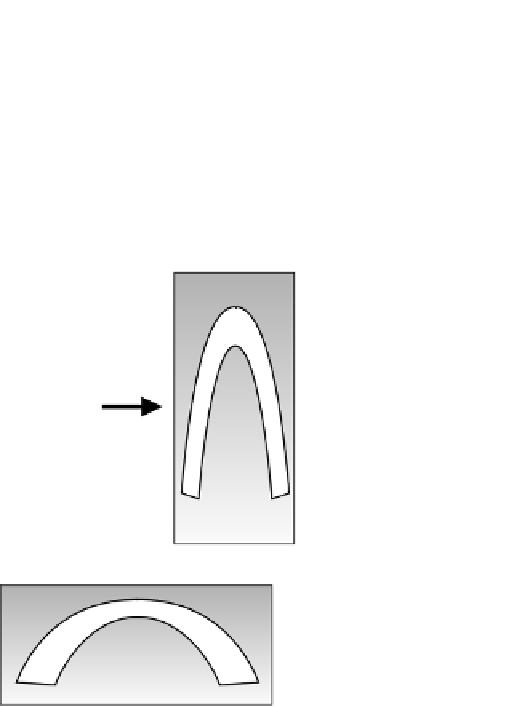Geoscience Reference
In-Depth Information
Stretching
Shortening
Fig. 4.125
Flexural shear folding.
Class 1C
Class 2
Class 1C
Class 1B
Class 2
Class 1A
Fig. 4.126
Homogenous flattening of previously folded layers.
ability to resist. This commonplace exceedance of the elas-
tic limit (Section 3.15) is a feature of the brittle behavior
of rock as it stretches, expands, compresses, and twists in
response to tectonic and thermodynamic stresses; faults,
folds, and metamorphism (changes of rock state) are the
geological end-result of the cumulative effects of all this
motion (see Sections 4.14- 4.16). Rocks may also be
broken by explosive fragmentation accompanying volcanic
eruptions (Section 5.1). All such rupture processes involve
the release of seismic elastic energy, estimated as an average
total of 7.5
10
17
J annually. Much of the energy is trans-
mitted with the seismic waves that propagate outward
radially from earthquake epicentral zones. A very strong
(and very rarely occurring) earthquake triggered by




























Search WWH ::

Custom Search